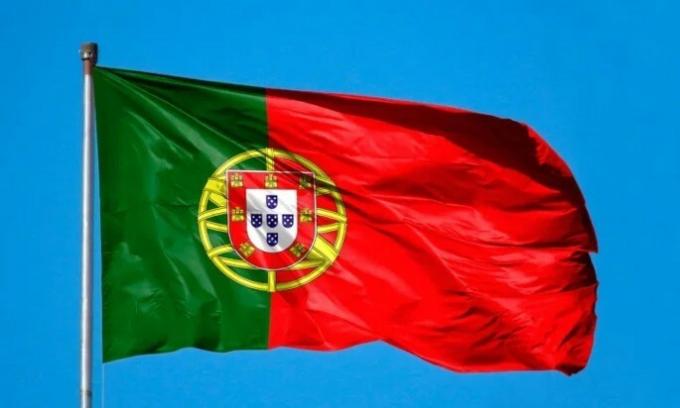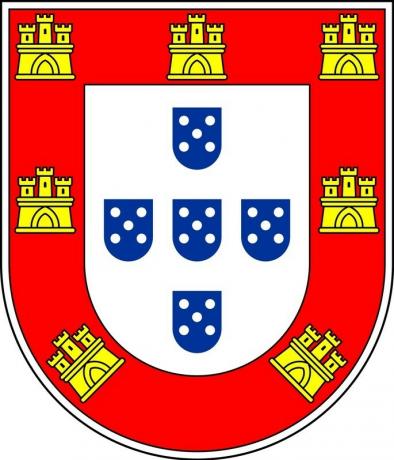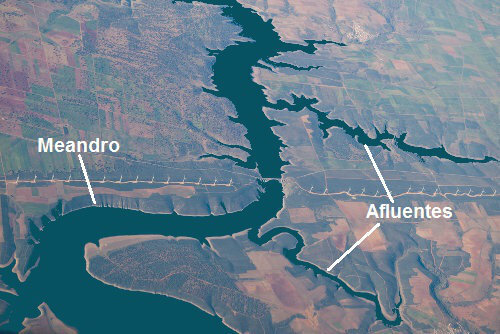THE Portugal flag it is a rectangle, divided by the colors green and red. At the junction of the two colors, the armillary sphere and the Portuguese shield are superimposed.
This flag was established with the proclamation of the Republic in 1910.
meaning of the flag of Portugal

ith the proclamation of the Republic in 1910, many republicans wanted to erase some symbols of the old regime. The monarchic flag bore the colors white and blue.
In this way, these colors were replaced by green and red that signify hope and courage, respectively.
However, in Portugal, they referred to the colors of the Portuguese Republican Party and Freemasonry, groups that initiated the coup that overthrew the king.
It is important to emphasize that green occupies 1/3 of the flag and red 2/3, as this reminds us of the Iberian integralism project. Thus, the green would be Portugal and the red, Spain, united in the form of a utopian federalism.
Armillary sphere
The armillary sphere was introduced by King D. Manuel I (1495-1521) and represented the monarch as king of the five continents.
The armillary sphere was the stylization of the ancient globes used in the 16th century. It was also the personal symbol of Infante D. Henrique, the Navigator, who did so much for the development of navigations.
Know about the Portuguese Navigations
Portugal flag shield

The shield is the oldest symbol of Portugal and refers to the country's origins when it was still the Portucalense County.
On the red border there are seven castles and in the center, on a white background, five blue shields with five white besants arranged in the shape of a cross.
Read more at Formation of Portugal and Avis Revolution
castles
The origin of castles is controversial, as they have been reinterpreted in various ways throughout history.
There are scholars who claim that the five Moorish kings were defeated by the first Portuguese king, D. Afonso Henriques (1139-1185).
Others claim that its use began with King Alfonso III, nephew of the Queen of Castile and who incorporated the symbol into his personal shield.
There are currently seven yellow castles, each with three towers, arranged on a red background.
Besants
The term besant denoted the gold coins used in the Byzantine Empire. Initially they were used to represent the wealth of the kingdom of Portugal. It was King Afonso Henriques who incorporated them into the shield.
Later, with the “Milagre de Ourique”, before the Battle of Aljubarrota, it was reinterpreted as the five wounds of Christ. Only with King Afonso III (1248-1279) did this shield take on the shape of a cross linking Portugal to its Christian origins.
History of the flag of Portugal
It should be noted that flags were used in medieval times to identify the armies of each feudal lord. Thus, until the reign of D. João II (1481-1495), the flags were armorial, that is, they were pieces of square fabric that carried only the shield.
Likewise, the pavilions identified the reigning sovereign. Therefore, each king had its own flag that underwent modifications when the monarch died or the kingdom incorporated new territories.
This was the case when Brazil's status change took place. By decree of D. John VI (1816-1826), the former colony was elevated to the category of kingdom within the Portuguese monarchy.
In this way, another flag was established, that of the United Kingdom of Portugal, Brazil and Algarves. An armillary sphere in gold on a blue background representing the kingdom of Brazil was introduced.
With the Porto Liberal Revolution, which inaugurates the constitutional monarchy, and the independence of Brazil, another Portuguese flag will be created.
By decree of October 18, 1830, during the reign of Dona Maria II (1834-1853), it was defined that the pavilion was split vertically in white and blue, with the blue being next to the shaft and the real weapons placed in the center of the flag.

Curiosity about the flag of Portugal
As the politicians could not reach an agreement on what the new Portuguese labaro would be, it was chosen by a commission of artists, which included the painter and ceramist Bordalo Pinheiro.
Learn more about other banners:
- Brazil's flag
- flag of argentina
- Canada flag
- France flag
- flag of japan
- United states's flag
- England's flag
- Paraguay Flag
- Spanish flag
- Russian flag
- Chile flag

